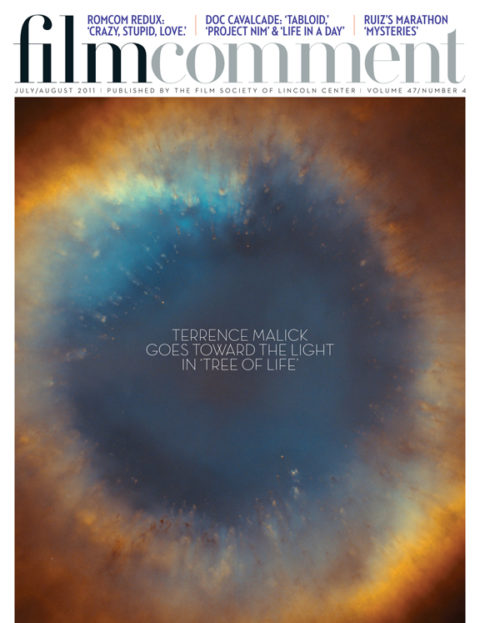
“The actors who appealed to me were the characters who were usually lost way down the playbill. People like Franklin Pangborn, Billy De Wolfe, Van Heflin. No one had much to say about their technique, but I learned more from them than I did from Kirk Douglas.” This gobsmacker pops up fairly early in Michael Feeney Callan’s otherwise sobersided bio-hagiography. What on earth was Robert Redford talking about? These copiously researched 468 pages, including interviews conducted over a 14-year period, provide nary a clue about why a man who to this day has never gotten lost on the playbill would say such a thing. He was a leading man from nanosecond one, and remains so even in the Twilight of Golden Boyhood of his 75th year.
“This young blond surf god who was such a great guy,” as Redford’s most frequent collaborator Sydney Pollack first described him, has nothing in common with the outré likes of Pangborn and De Wolfe, and he doesn’t swim in the all-purpose-player “mainstream” of Heflin either. Lew Ayres and Douglas Fairbanks Jr. spring more to mind when divining Redford’s “type.” Like them he has always been a perfect pro. Good-looking but never narcissistic. Resolute but rarely adventurous. He knows his lines, doesn’t bump into the furniture, and, most important of all, supports his co-stars like the Rock of Gibraltar. In fact, looking over the highlights of Redford’s acting oeuvre—Butch Cassidy and the Sundance Kid, The Way We Were, All the President’s Men, and Out of Africa—he’s without question Hollywood’s most resourceful team player. Paul Newman, Barbra Streisand, Dustin Hoffman, and Meryl Streep—stellar talents all—looked even better thanks to the co-star framing he provides for them. An ideal best pal to the men, a total dreamboat to the women, Redford hasn’t appeared outside the shadow of another star very often. The standout exception in this regard is The Candidate, Michael Ritchie and Jeremy Larner’s 1972 satire that cast Redford as a cynical pol who wins a Senate race to his complete surprise and, ultimately, his utter dismay. “What do we do now?” he haplessly muses at the film’s end.
The real Robert Redford has always had an answer to that question. In a career that encompasses acting, directing, political engagement (he being the embodiment of that most despised of all Americans, the Liberal), and cultural entrepreneurship (his Sundance Institute and Film Festival rendering him the indie Irving Thalberg), he’s been in our dreams and in our moviewatching lives for over 40 years. Off screen the father of four has been married twice with a few glamorous dalliances along the way, but nothing scandalous. And while Callan does his damnedest to make Redford appear complex (he once played Stanley in a workshop production of A Streetcar Named Desire) and edgy (he had a role in Sidney Lumet’s television adaptation of The Iceman Cometh), it’s Redford’s lack of edge that is arguably his most appealing quality.
For all of this, one fascinating exception to the edgeless rule should be noted: Inside Daisy Clover. This musical drama gave Redford his first attention-getting role as the gay alcoholic leading man with whom the film’s Judy Garland–like heroine (Natalie Wood) falls ill-advisedly in love. Callan makes much of Redford’s resistance to playing the character as gay—which in 1966 would have doubtless involved stereotypical broadness. Gavin Lambert, who adapted the film’s screenplay from his own novel, was more than pleased with the result. “He sailed through it . . . his comprehension is precocious.” Yet we’re told via Mike Nichols, with reference to the scene (in which Redford does not appear) where Wood learns he’s left her for another man, “What Redford created [elsewhere] on-screen they corrupted . . . It was a complete turnaround for the story in his mind, and it upset him deeply.” But the “story in his mind” wasn’t the one Lambert wrote. Did Redford read only his “sides” of the script? Or to put it another way, does Robert Redford always know what’s what?
It’s a worthwhile question. Callan reports how Redford brought in writer David Rayfiel to beef up his scenes in The Way We Were, so desperate was he to make his character someone active rather than the passive love object Arthur Laurents had so successfully created. It was in no way needed. All Redford had to do was stand there and bask in Barbra’s enraptured gaze.
Hollywood as a whole could be every bit as blinkered about Redford, if not more so. Thus he was totally miscast in The Great Gatsby. Producer Robert Evans failed to realize that the title character of Fitzgerald’s novel saw himself as Robert Redford, while he looked and acted far more like Robert Blake.
Things were considerably more resolute when Redford decided to get behind the camera—hitting the jackpot the first time out with Ordinary People. This Oscar-winning family drama featuring a riveting performance by Mary Tyler Moore as “control freak” mother clearly indicated Redford had what it takes for a second career. The Redford-directed efforts that followed have been a mixed bag (Quiz Show being the best.) Invariably well-made and well-cast, they rarely dip below a surface of “tasteful” dramatic calm. His latest, the Civil War drama The Conspirator tries for something more, but in a CGI- and animated-comedy-dominated industry it had little chance of raising interest much less making an impact. Redford the actor has pretty much faded into the background, having been superseded by a new generation of actors like Ryan Gosling, James Franco, Ewan McGregor, Joseph Gordon-Levitt, and Brad Pitt.
Ironically Gordon-Levitt made his motion picture debut in A River Runs Through It—a film in that Redford gave Pitt his first substantial role. Now he’s in the film that everyone’s talking about: The Tree of Life. I expect Callan is working on that biography already.
© 2011 by David Ehrenstein








